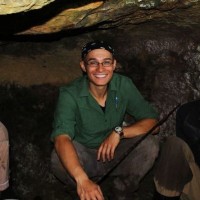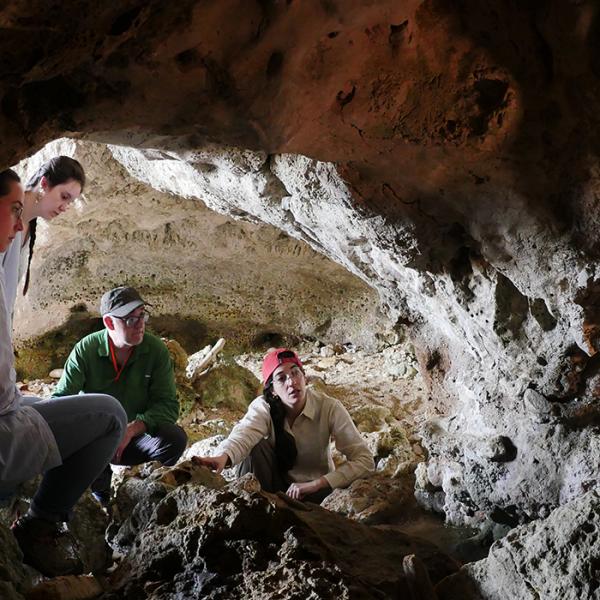Steven Goldstein
The development of food production was one of the most transformative processes in the human past, precipitating changes in technologies and social organization throughout the world. In Africa, the trajectory toward cattle based herding occurred long before the adoption of plant agriculture, and involved an increase in mobility. As early African herders spread throughout Eastern Africa between 5000 and 1200 years ago, they adopted new economic strategies in the face of climate change and environmental challenges, but also had to develop new social mechanisms for managing relationships in culturally complex landscapes. The archaeological record reflects this story, revealing a diverse mosaic of lifeways during this time period. My research goals are to understand the social institutions and economic strategies that emerged to make pastoralism a viable and persistent strategy in arid and unpredictable environments. To this end, my dissertation project focuses on the role of regional exchange networks in building herder alliance networks, which ensured long term resilience and influenced identity formation in southern Kenya.
 I use multiple lines of evidence to address my research questions, with an emphasis on the study of stone tool technologies as the most enduring and abundant facets of the archaeological record. This is especially relevant for the study of prehistoric herders in Kenya, who developed long distance exchange networks to transport high quality obsidian from specific geochemical source groups to widely disperse communities from c. 3000-1400 years ago. My study of the material signatures produced by tool production, use, and disposal allows me to trace the structure of these exchange networks across the landscape. At the center of these networks, is a central obsidian quarry site on top of Ol Doinyo Opuru in the Central Rift Valley, north of Lake Naivasha, which was used exclusively by a single pastoralist culture-group for over 1500 years. “Ol Doinyo Opuru” translates as “The Mountain of Steam”, and is a geochemically active volcanic complex with distinct green obsidian outcrops on the upper slopes, in what would have been a remote forested area.
I use multiple lines of evidence to address my research questions, with an emphasis on the study of stone tool technologies as the most enduring and abundant facets of the archaeological record. This is especially relevant for the study of prehistoric herders in Kenya, who developed long distance exchange networks to transport high quality obsidian from specific geochemical source groups to widely disperse communities from c. 3000-1400 years ago. My study of the material signatures produced by tool production, use, and disposal allows me to trace the structure of these exchange networks across the landscape. At the center of these networks, is a central obsidian quarry site on top of Ol Doinyo Opuru in the Central Rift Valley, north of Lake Naivasha, which was used exclusively by a single pastoralist culture-group for over 1500 years. “Ol Doinyo Opuru” translates as “The Mountain of Steam”, and is a geochemically active volcanic complex with distinct green obsidian outcrops on the upper slopes, in what would have been a remote forested area. With the goal of understanding the role of this important node within the exchange networks I study, I undertook the first surveys and excavations of the quarry site in the late Summer/ early Fall of 2014. In collaboration with colleagues from the National Museums of Kenya, we identified spatial activity patterns and material traces that indicate that communal participation in lithic reduction at the Opuru quarry site was actually a vital means of organizing exchange networks, and building the social alliances to maintain them across the region. In addition, the tremendous amount of stone tool debris we recovered spans over a millennium of consistent use, and is an invaluable data set for identifying changes in technological responses to social and environmental stress. When the data from these excavations is combined with datasets from sites excavated over the last 50 years, it offers a unique opportunity to understand how herders were organizing strategies through both time and space. This offers a critical new perspective in anthropological discussions of how food production spread and was maintained in African contexts.
My research is at the intersection of traditional archaeological approaches and innovate technological methods. The project is multi-scalar, integrating data from specific sites into a broader regional framework. I am dedicated to ongoing field research in Kenya and Tanzania to grow my datasets, and address larger and larger regional questions. I also work to develop and adopt approaches for studying lithic technological organization to African contexts, and I also employ 3D scanning and morphometric analysis, Geographic Information Systems, and experimental archaeology. Using multi-faceted approaches enhances our ability to identify and disentangle the complex climatic, ecological, social, and economic forces that structure the archaeological record of early herding in arid Eastern Africa.
My dissertation project is complemented by ongoing participation in archaeological research in other areas. This includes research at the early pastoralist megalithic burial sites in the Turkana region of Kenya (directed by E.A. Hildebrand and K. Grillo), and research at a major herder site on the southern frontier of herding on the Mbulu Plateau of Tanzania (directed by M. Prendergast and K. Grillo. I am also working with F. Marshall to assess the long-term ecological impact of pastoral habitation and landscape modification in the arid savannas of East Africa. In concert, these different facets of my research reveal that early African herders developed new and diverse socio-economic strategies to survive climate change, flourish in unpredictable environments, and eventually spread across the continent.


